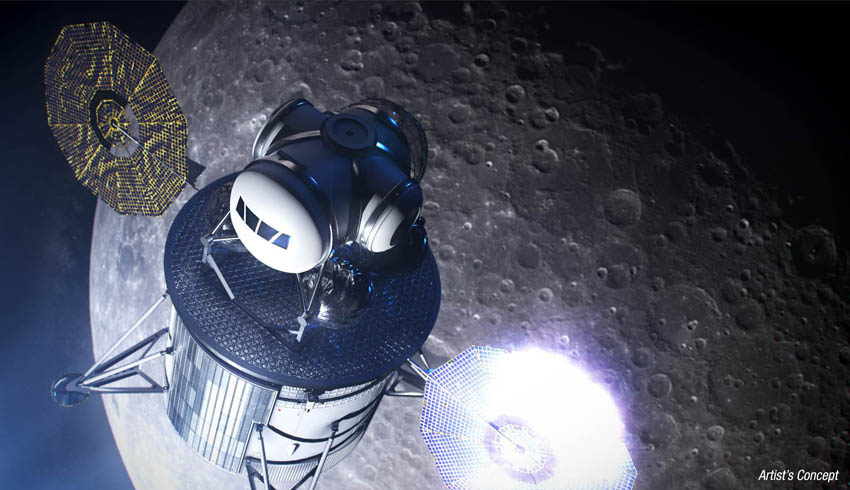NASA has a launch vehicle, the Space Launch System, and spacecraft, the Orion, which are mostly developed but what it needs is a lander to carry astronauts from lunar orbit to the moon surface and back.
On the eve of the 50th anniversary of the first moon landing, NASA outlined a two-phase approach for the next-generation lunar landers.
Phase one will support development of an initial, basic non-reusable lander design for a demonstration mission in 2024, carrying two astronauts to the surface, staying just under a week and then returning to the orbiting staging post called Gateway. Two astronauts would remain on Gateway.
The lander would reach Gateway on one or more commercial launch vehicles.
One option under consideration would be for the company chosen to produce the lander to come up with an enhanced version for later missions, beginning with a demonstration mission in 2026.
The enhanced version would be able to stay on the moon surface for longer, possibly through the two-week lunar night. It would also carry four rather than two astronauts plus additional cargo and would be partly reusable.
NASA has in mind a public-private partnership deal for lander development, with interested companies willing to provide at least 10 per cent of development costs. The chosen companies will own the landers, not NASA, which will be in effect buying services rather than hardware.
According to solicitation released last week, NASA will choose one or two companies to develop landers for the 2024 mission, most likely from a larger of firms awarded 12-month study contracts.
One likely contender is Blue Origin, the private space company of Amazon founder Jeff Bezos, which in May revealed its concept for a reusable lander called Blue Moon.
The company recently completed a successful six-minute full-duration test firing of the BE-7 engine that will power Blue Moon.
NASA has taken a significant shortcut, ruling out a full open contest and awarding Northrop Grumman a contract for a basic habitation module for the lunar Gateway.
NG gained the tick of approval as it has a suitable module mostly developed and can thus meet the NASA schedule.
In 2016, NASA initially solicited ideas for habitation modules from six companies through the Space Technologies for Exploration Partnerships 2 (NextSTEP-2) program.
It has now concluded that only NG had a module design and the production and the tooling resources capable of meeting the 2024 deadline.
The NG module is based on its Cygnus cargo spacecraft, in active production, and adaptation for habitation had sufficiently progressed. The unit is small enough to be launched on a commercial vehicle.
To be available for the Artemis-3 mission, which will take astronauts to the Gateway and then to the moon, the habitation module will need to be in place at the Gateway by 2024. That means it needs to be completed by mid-2023 for a launch in late 2023.

